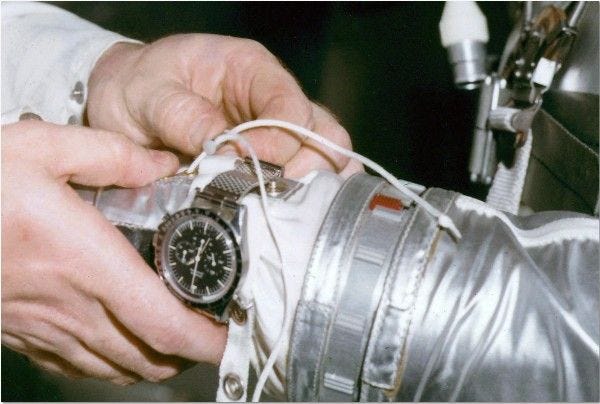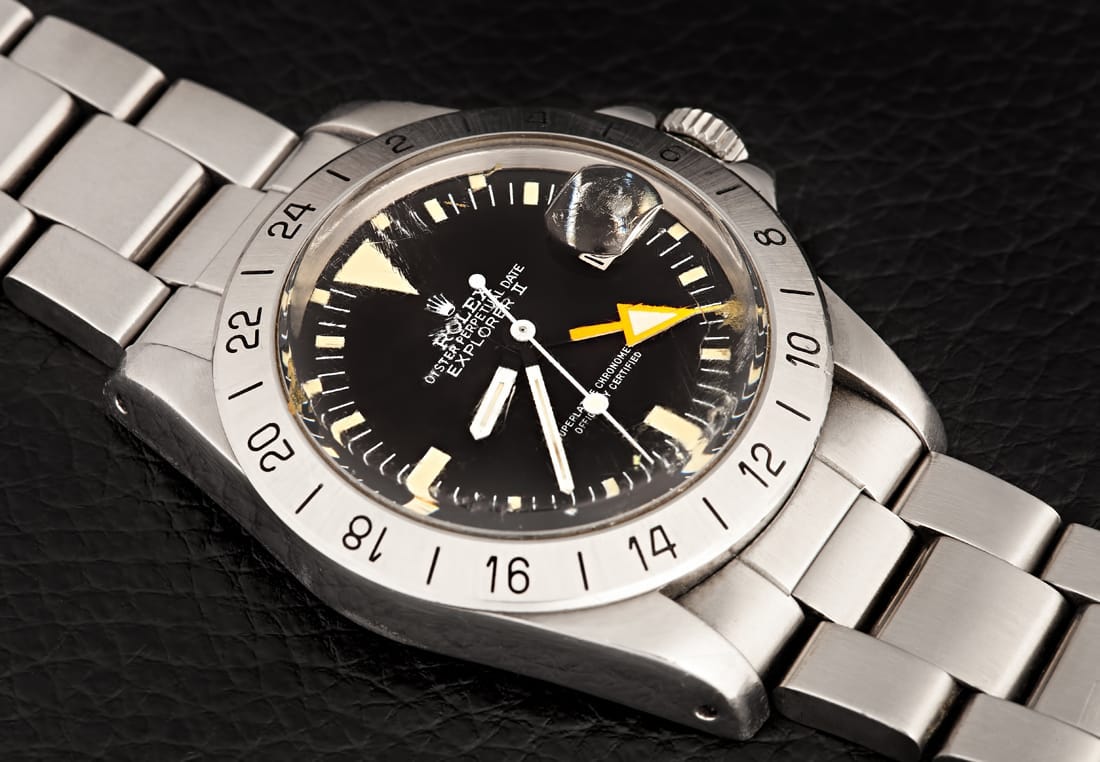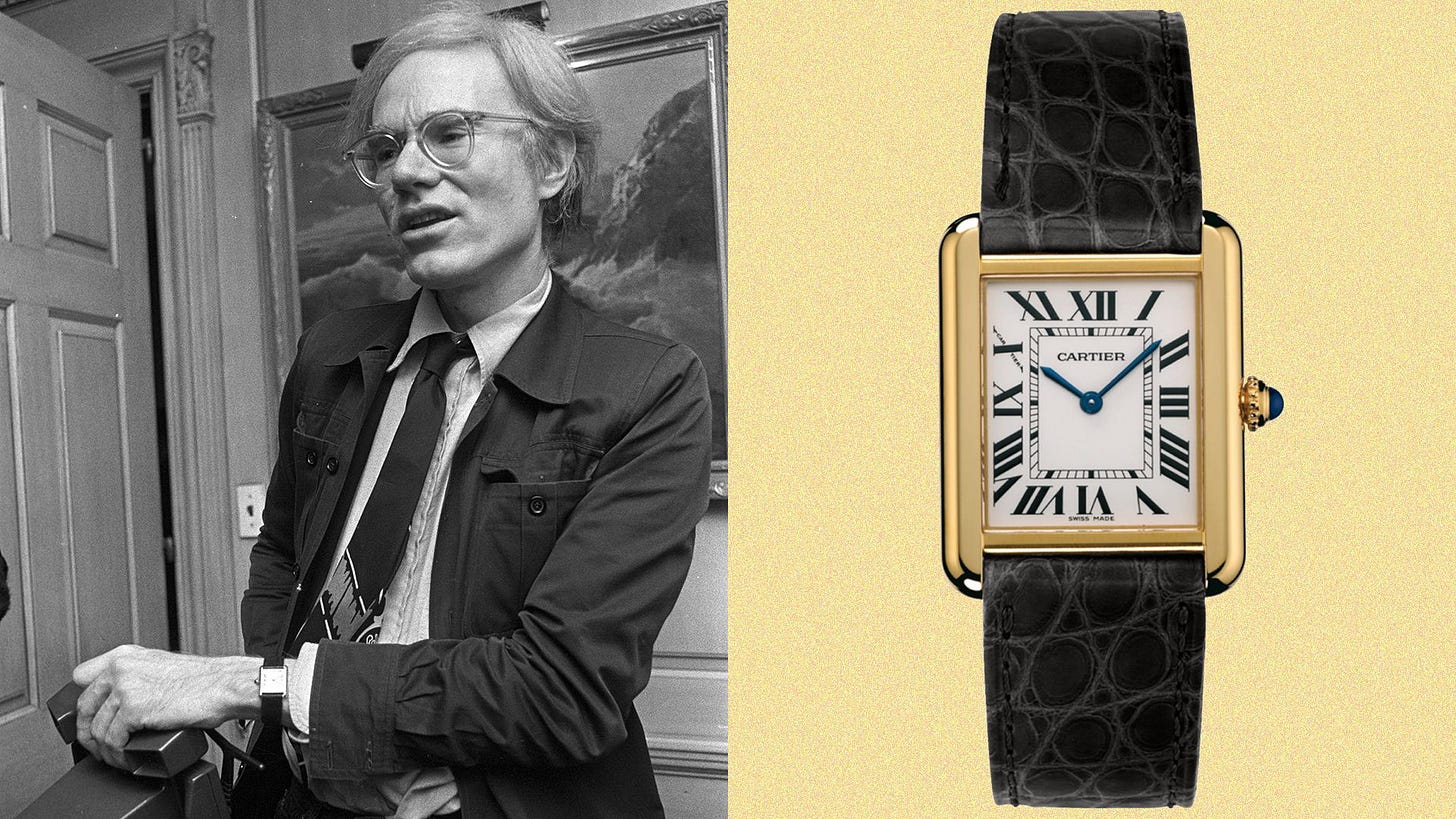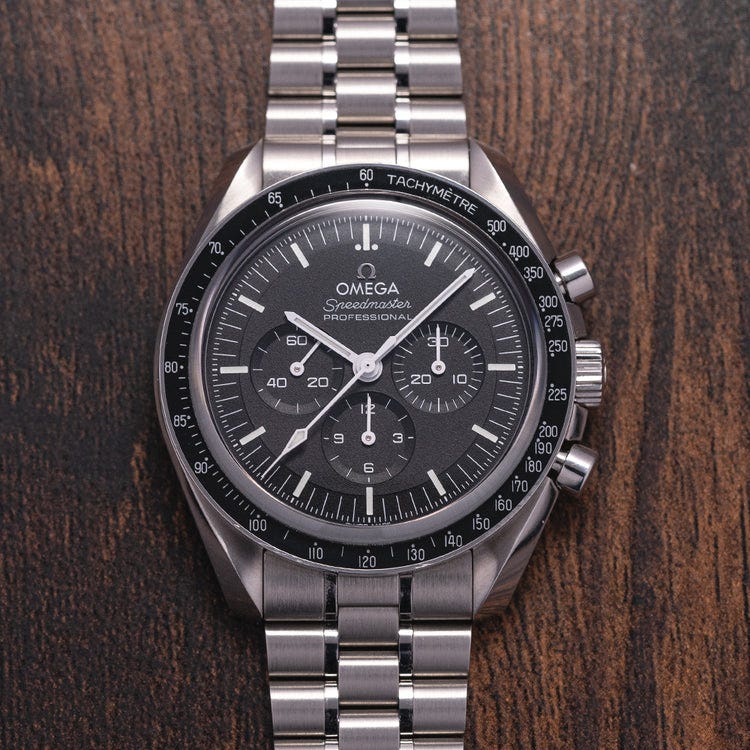These watches cheated death
The Watches That Were Nearly Killed — And How They Came Back
Watches are more than just tools or status symbols. Sometimes, they’re survivors.
Over the decades, certain models came this close to being killed off by their own brands. Whether from lack of sales, changing tastes, or corporate strategy — these timepieces nearly disappeared forever.
But they didn’t.
Today, let’s explore three legendary watches that stared extinction in the face — and came roaring back.
Take a seat, grab your coffee, and in 6 minutes you’ll uncover some of watchmaking’s greatest comeback stories.
1. Omega Speedmaster — The Moonwatch That Almost Got Lost in Space
After its legendary moon landing in 1969, the Speedmaster fell on hard times.
The 1970s and 80s saw the quartz crisis hit mechanical watches hard. Omega struggled financially, and the Speedy wasn’t selling the way it used to. Internally, there were discussions at Omega about retiring the Speedmaster — or at least sidelining it for quartz models.
What saved it?
Behind the scenes, Omega’s decision to keep the Speedmaster alive was helped by collectors and enthusiasts who began valuing mechanical watches again as objects of art and engineering. Omega also leaned heavily on its NASA connection in marketing campaigns. Limited editions tied to Apollo anniversaries rekindled interest, while the 1998 X-33 project showed Omega’s ongoing commitment to space exploration. Gradually, the Speedmaster transformed from “old stock” into a cherished link to space history.
Today: The Speedmaster is Omega’s flagship. Models like the Speedmaster Professional 3861 are in demand, and limited editions often sell out in minutes.
2. Rolex Explorer II — The Forgotten Tool Watch
Launched in 1971, the Explorer II was designed for spelunkers and cave explorers. Its signature 24-hour hand helped distinguish day from night underground.
But in the 1980s and 90s, the Explorer II was a slow seller. It lacked the glamor of the Submariner, the versatility of the GMT-Master, or the prestige of the Day-Date. Some retailers even stopped stocking it — and Rolex reportedly debated discontinuing it altogether.
What saved it?
Rolex’s marketing subtly shifted in the 2000s, positioning the Explorer II as the tool watch for adventurers who don’t want a watch everyone else at the party is wearing. Its association with mountaineers, cave explorers, and adventurers helped reframe its image. The rare early references, especially the Ref. 1655 “Freccione” with its bold orange hand, started gaining value among collectors, which in turn boosted demand for newer models. Rolex quietly updated the movement and case over time, ensuring it kept pace with modern expectations without losing its rugged soul.
Today: The Explorer II 226570 is a sought-after model, prized for its rugged looks and real-world utility.
3. Cartier Tank — The Classic That Almost Became a Casualty of Quartz
The Cartier Tank is one of the most iconic dress watches ever — but in the 1970s, it nearly became a relic.
Cartier, struggling with declining sales, considered whether the Tank could remain relevant as the world fell in love with quartz watches and digital displays. Sales slumped, and younger buyers weren’t interested.
What saved it?
Cartier’s clever pivot during the quartz crisis wasn’t just about price — it was about accessibility. The Tank Must line kept the proportions, elegance, and signature style intact while using cost-effective quartz movements and colourful lacquer dials that resonated with 1980s fashion trends. Cartier also doubled down on celebrity endorsements, and the Tank’s visibility on icons like Jackie Kennedy and Andy Warhol reinforced its cultural cachet. By blending tradition with trend, Cartier made the Tank desirable again.
Today: The Tank is Cartier’s signature, available in dozens of variants — from entry quartz to high horology.
Watch of the Week: Omega Speedmaster Moonwatch Professional 3861
The Speedy that almost didn’t make it — now more advanced than ever.
Co-Axial escapement
METAS Master Chronometer certified
Hesalite or sapphire options
It’s a piece of living history that embodies how a watch can come back stronger than ever.
Final Thoughts
The lesson? Never count a watch out.
From space missions to quartz crises, these models prove that even when a watch seems on its way out, the right mix of design, heritage, and collector love can bring it back stronger.
Until next time 🫡





